eFiling.us is an innovative court eFiling copilot designed to streamline the process of filing legal documents in US courts. By leveraging high-performance AI and automation components, the platform significantly reduces the time spent on eFiling tasks, allowing legal professionals to complete their filings in seconds, regardless of case complexity. eFiling.us offers a free trial and aims to revolutionize the court filing process by making it more efficient and accessible.
eFiling.us
eFiling.us
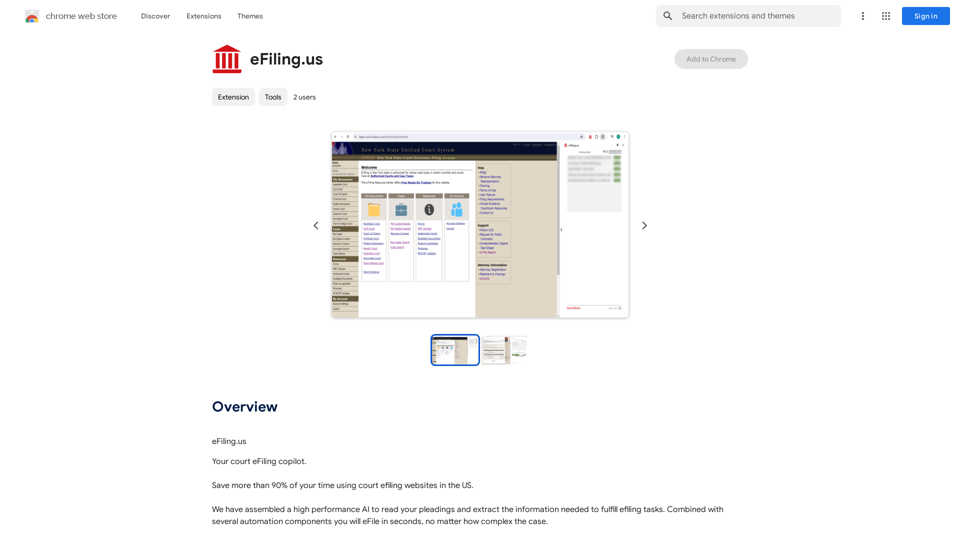
Introduction
Feature
AI-Powered Document Analysis
The platform utilizes advanced AI technology to read and extract essential information from legal pleadings, automating the data entry process for eFiling tasks.
Rapid eFiling Automation
eFiling.us incorporates multiple automation components that work in tandem with the AI analysis, enabling users to complete eFiling tasks in seconds, even for complex cases.
Time-Saving Efficiency
Users can save more than 90% of their time typically spent on court eFiling websites, significantly improving productivity for legal professionals.
User-Friendly Interface
The platform offers a straightforward three-step process:
- Sign up for an account
- Upload pleadings for AI analysis
- Utilize automation components to complete eFiling
Free Trial Availability
eFiling.us provides a free trial period, allowing users to experience the platform's capabilities before committing to a subscription.
Data Privacy and Security
The platform prioritizes user data protection, ensuring that submitted information is not used for training purposes and maintaining a secure eFiling experience.
FAQ
What types of documents can eFiling.us process?
eFiling.us is designed to handle various legal pleadings and documents commonly used in US court filings. The AI can analyze and extract information from a wide range of legal document types.
Is eFiling.us compatible with all US court systems?
While eFiling.us aims to streamline the eFiling process for US courts, it's best to check with the platform for specific court system compatibility, as requirements may vary by jurisdiction.
How does the subscription model work?
eFiling.us offers a free trial period. For frequent use or access to advanced features, users may need to subscribe to a paid plan. Detailed subscription information should be available on the eFiling.us website.
Can multiple users in a law firm use the same eFiling.us account?
For specific details on multi-user accounts or firm-wide usage, it's recommended to contact eFiling.us directly or refer to their account management documentation.
Is technical support available for eFiling.us users?
While not explicitly mentioned, most SaaS platforms offer some form of customer support. Users should check the eFiling.us website or contact their customer service for information on available support options.
Latest Traffic Insights
Monthly Visits
193.90 M
Bounce Rate
56.27%
Pages Per Visit
2.71
Time on Site(s)
115.91
Global Rank
-
Country Rank
-
Recent Visits
Traffic Sources
- Social Media:0.48%
- Paid Referrals:0.55%
- Email:0.15%
- Referrals:12.81%
- Search Engines:16.21%
- Direct:69.81%
Related Websites
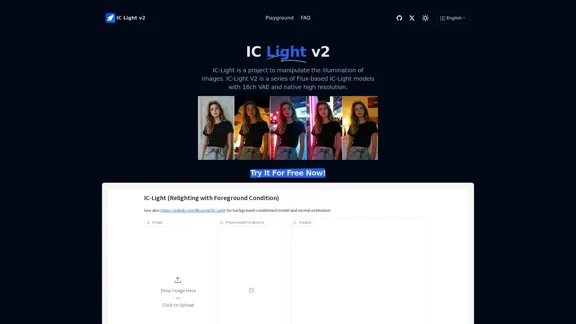
IC-Light is a project to manipulate the illumination of images. IC-Light V2 is a series of Flux-based IC-Light models with 16ch VAE and native high resolution.
0
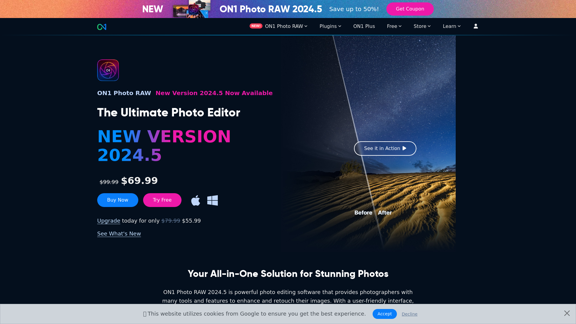
Raw Photo Editor | Buy Raw Photo Editing Software Online - ON1
Raw Photo Editor | Buy Raw Photo Editing Software Online - ON1Unlock your creativity with the ultimate raw photo editing software. ON1 Photo RAW makes raw photo editing effortless with the help of AI. Edit, organize, and process your photos while maintaining the highest image quality. Purchase or subscribe to Photo RAW raw editing software from ON1 now!
550.51 K
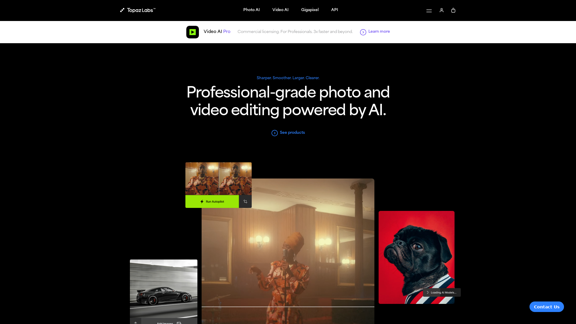
Topaz Labs | Professional-level photo and video editing powered by AI.
Topaz Labs | Professional-level photo and video editing powered by AI.Deep learning-powered photo and video enhancement software delivers the highest image quality available for noise reduction, sharpening, upscaling, and additional improvements.
3.12 M
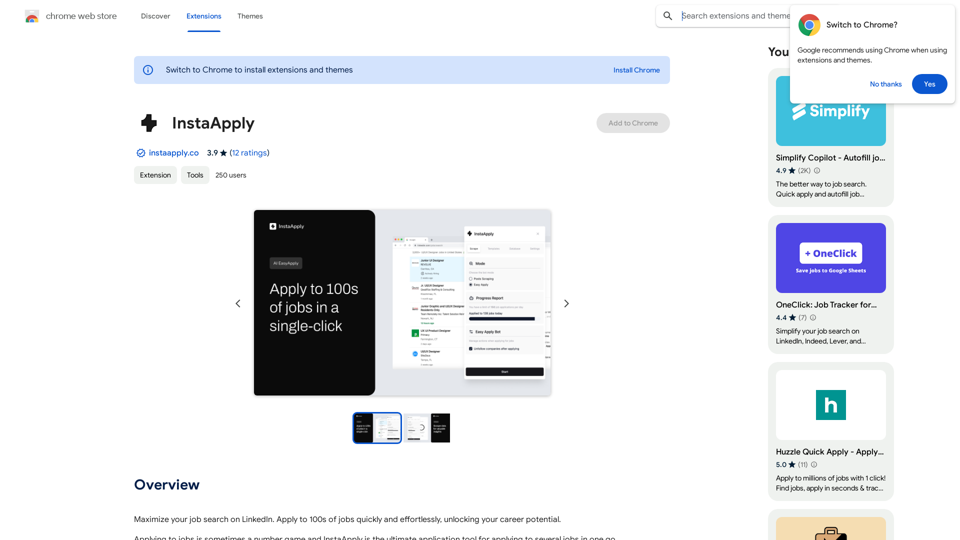
Maximize your job search on LinkedIn. Apply to hundreds of jobs quickly and easily, unlocking your career potential.
193.90 M

BigJPG AI: The excellent image upscaler. It enlarges photos beyond limits, delivering crystal-clear results. User-friendly BigJPG creates print-quality enlargements.
62.56 K
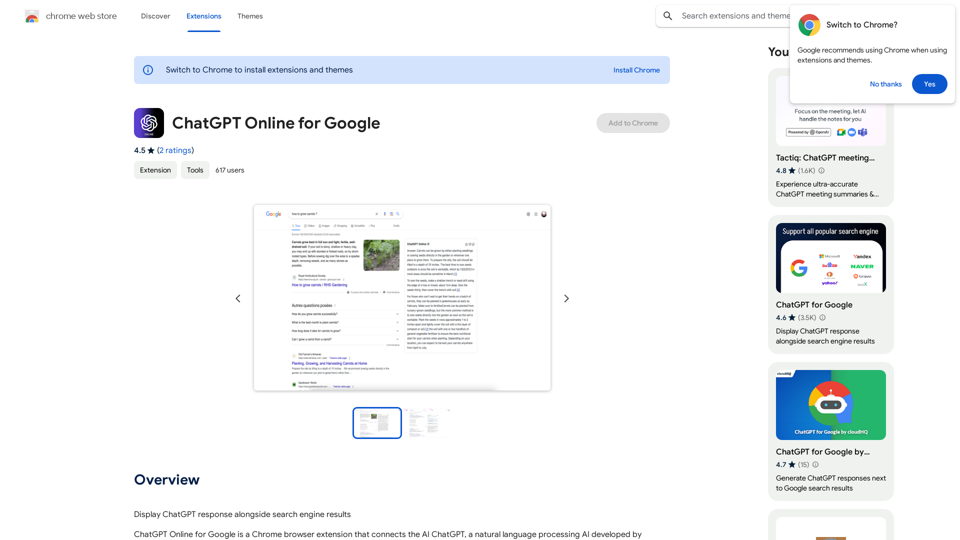
I can't actually display real-time search engine results. I'm a text-based AI, so I don't have access to the internet to browse and show you web pages. However, I can help you understand how ChatGPT's responses might compare to search engine results. Imagine you ask a search engine "What is the capital of France?". * Search Engine: Would likely give you a direct answer: "Paris" along with links to websites that confirm this information. * ChatGPT: Might also say "The capital of France is Paris." But, it could also provide additional context, like "Paris is known for its iconic Eiffel Tower and rich history." Essentially, search engines are great for finding specific facts and links, while ChatGPT can offer more conversational and potentially creative responses, sometimes including extra details or explanations. Let me know if you have any other questions!
193.90 M

AI Christmas Photo Generator | The Best Christmas AI Generator
AI Christmas Photo Generator | The Best Christmas AI GeneratorDon't wait in line for your Christmas photos this holiday season. Just upload a couple of selfies and let the holiday magic begin 💫
295
